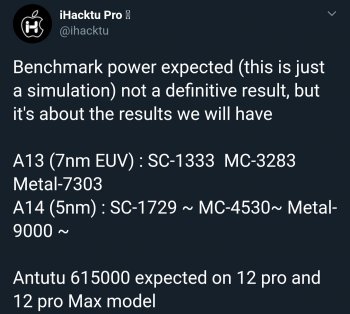This just hurt my head. I don’t believe anyone has ever made this conclusion before.
I’d encourage you to go read on the differences between RISC and CISC.
I can assure you that when the Mac was on PowerPC and migrated to Intel, Apple didn’t get a magic boost in memory.
I don't know if I explain it, it would do a better job than this:
This Article Discusses an Overview of What are RISC and CISC Architecture - Working, Differences, Advantages, Disadvantages & Its Applications

www.watelectronics.com
To quote directly from the article (it is a direct copy and paste from that page):
"In RISC, more RAM is required to store assembly level instructions."
When I wrote what I did, what I meant was, in order to accommplish the same task, RISC machines normally require more instructions than CISC machines do (which is what I called instruction density). The article used the Multiply instruction as an example. But even something as simple as an add and store could have been used. In CISC CPU, add and store is often one instruction. In a RISC CPU, it is two. Therefore, you need 2 memory locations for the RISC instructions, and one memory location for the CISC instruction.
I understand that compilers and hand optimization can mitigate this to some extent, but in general, RISC needs more memory than CISC does, and if I can use my own term, the CISC machine has higher "instruction density" than RISC does.*
I also understand that the various accelerator modules that Apple employs can impact that, but those accelerator modules do not come into play with most regular applications or the OS itself.
*=This was known as far back as the original IBM RISC machine, mid to late 1980s.
[automerge]1596146191[/automerge]
It’s extremely common, even expected, for developer machines to have more memory than the target platform to account for all the debugging overhead.
Please let me know at what point Apple is calling the DTK Mac Mini machine as a developer platform. Because I certainly have never seen, read or heard it being presented that way. Apple is saying that this is a "transition kit", and is specifically calling it a "transition kit" over and over. It is designed to allow developers to run apps compiled for AS to run on AS hardware.
As you said, this is the "target platform", not the development platform.
Can you honestly see somebody who is developing on 32+GB High End iMacs, Mac Minis and MacBook Pros just abandoning those platforms to run on a potentially unstable AS Mini? I can't. I can see them running the resultant code on the AS Mini, as it is the only game in town, but there is no reason to move from an established platform that requires just the flip of a software switch to produce AS code.

 sixcolors.com
sixcolors.com



